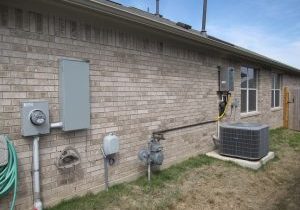Solar hot water systems harness the power of the sun to heat up liquid for households. This is an important technology as it vastly reduces dependence on the grid. According to the Department of Environment and Climate Change, water heating accounts for up to 37% of household energy usage. It takes the biggest piece of the pie, followed by heating and cooling at 23%, fridge at 12%, and kitchen appliances at 10%.
Clearly, it is in the best interest of homeowners to reduce energy consumption through solar power. They will be paying less for their monthly bills and while lowering their carbon emissions.
So how do solar hot water systems work?

Types of Collectors
The most crucial part of the system is the collector. This is installed on the roof where the sun can shine on it and heat up the water. There are two major types available. One is the flat plate collectors which are deemed suitable when tank roof mounting is necessary. The other type is called evacuated tubes which are known for having greater efficiency. The latter is also an excellent choice for frost prone areas. Let’s delve deeper into each and get to know their distinct characteristics.
Flat Plate
Like the name implies, flat plate solar collectors look like level planes covered by glass. Underneath are copper pipes in which the water runs. These are usually connected to a water storage tank located on the roof itself, horizontally mounted for stability. When the sun hits the panel, the copper pipes heat up and so does the liquid inside it. Hot water rises to the top as a natural consequence of the differences in temperature. The hot water goes into the tank through a process called thermo-siphoning. On the other hand, cold water from the tank goes back into the coils for heating.
Evacuated Tubes

This consists of a series of two glass tubes that are fused at both ends. The space between them form a vacuum that increases overall efficiency. At the center is a copper pipe that acts as the heat conducting element. Several pipes run through the tubes and are connected to a circulation pump that flows to a storage tank. Since this tank is insulated, water remains heated even at night despite the sun’s absence. This design is more effective as it can draw heat from the surroundings so direct sunlight is not necessary. It is also more durable so longevity won’t be an issue. In case of accidental damage, repairs will be cheaper to perform compared to flat plate collectors.
Boosters
The sun is generally able to provide enough heating power throughout the year. However, there are regions that may not get enough sunlight for extended periods. These times will call for additional help in the form of electric and gas boosters. With electric systems, the tank will be heated immediately when an internal temperature drop is detected. With tank-less gas water heaters, boosting will only happen during actual use which is more energy efficient.
Consult an expert to find out what would be the best for your needs. Contact us today.





